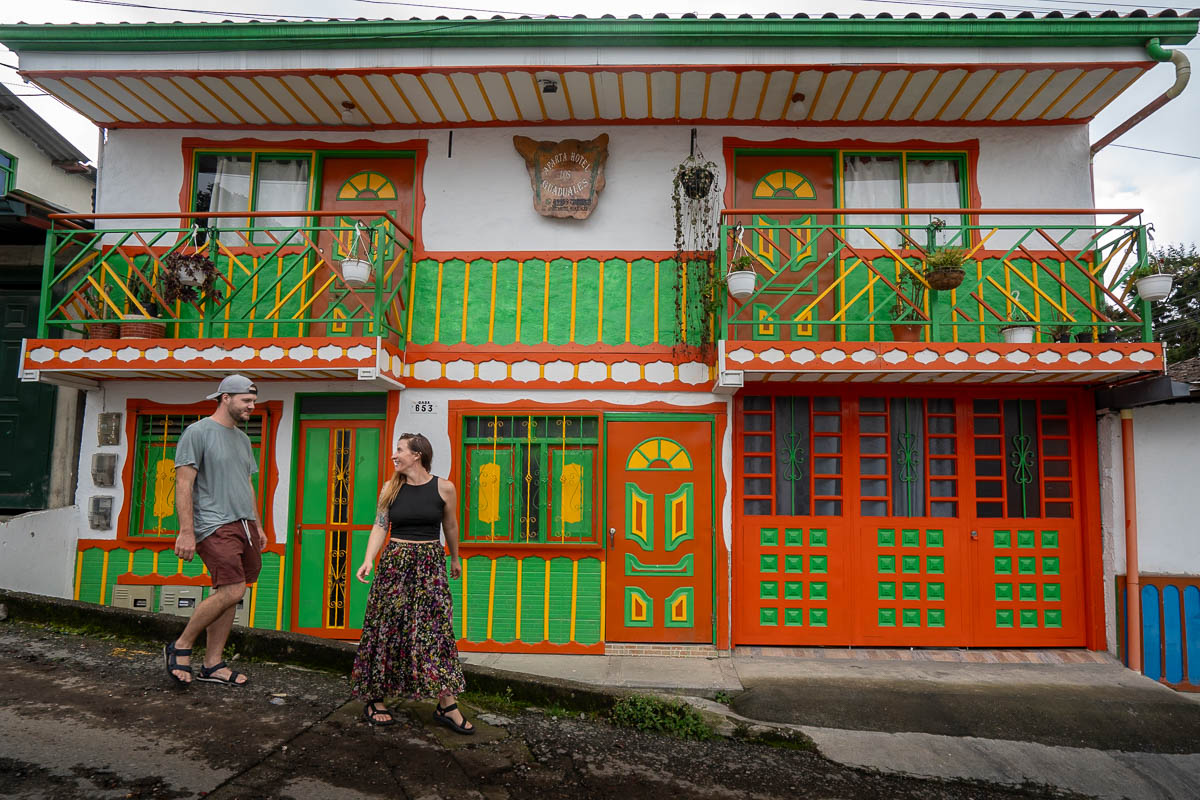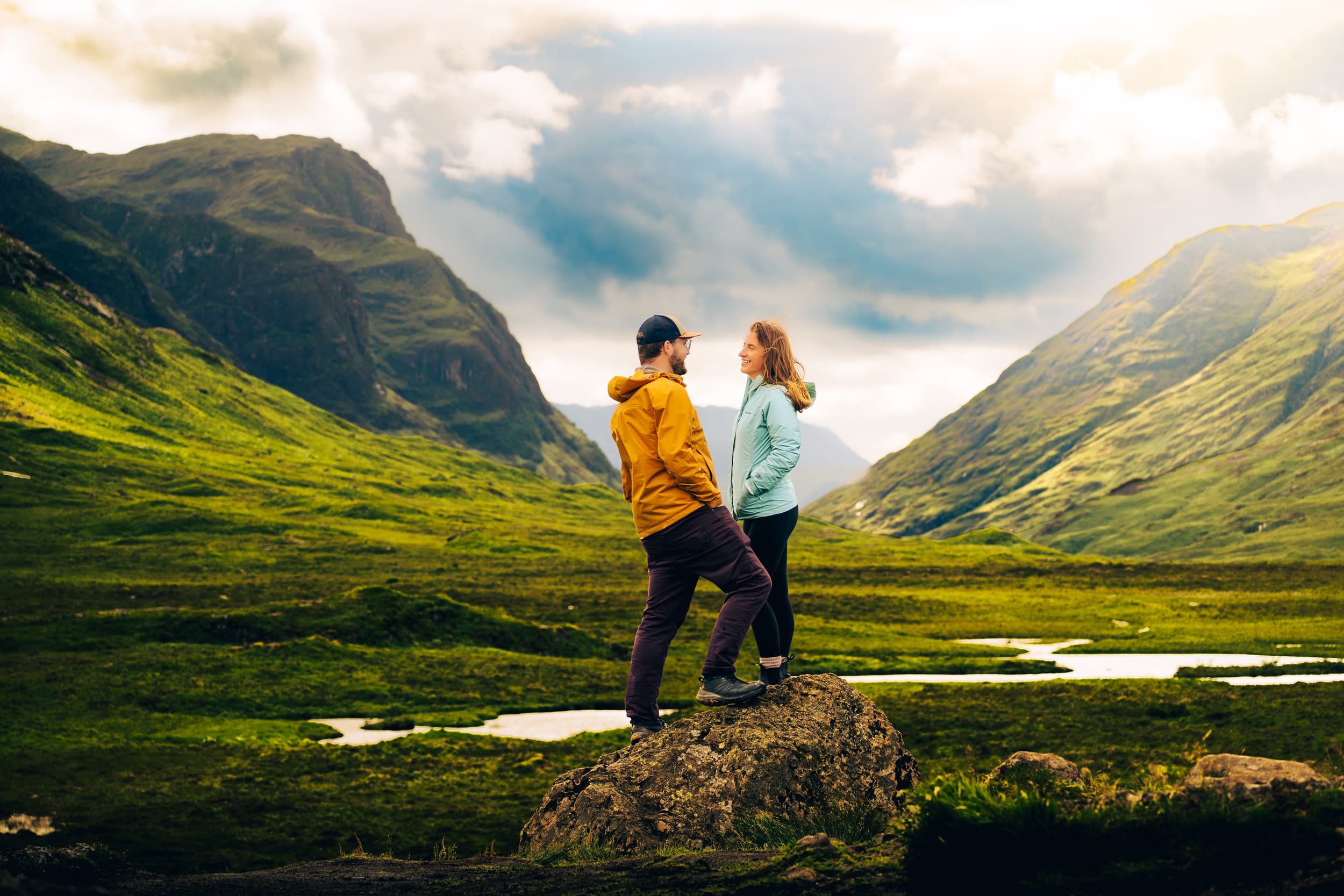Salento, Colombia, with its towering palm trees, colorful buildings, and misty hills, feels like something out of a movie—in fact, Disney’s Encanto was based on this charming village! And while the town may be small, with less than 10,000 residents, there’s still plenty to get up to here. Here’s 9 incredible things to do in Salento, Colombia, from drinking some of the best coffee to hiking under the tallest palm trees in the world!
This post may contain affiliate links. If you make a purchase through them, we may receive a small commission, for which we are extremely grateful, at no extra cost to you.
How to get to Salento
Salento is located in central Colombia, high in the Andes mountains. And, even though it’s relatively remote, it’s still super easy to get to!
Getting to Salento by bus
It’s quite easy to get to Salento from most of the major cities located near central Colombia, including Medellin, Bogota, and Cali.
In fact, one of my husband, Justin’s and my favorite things about Colombia is how easy and affordable it is to get around the country by bus!
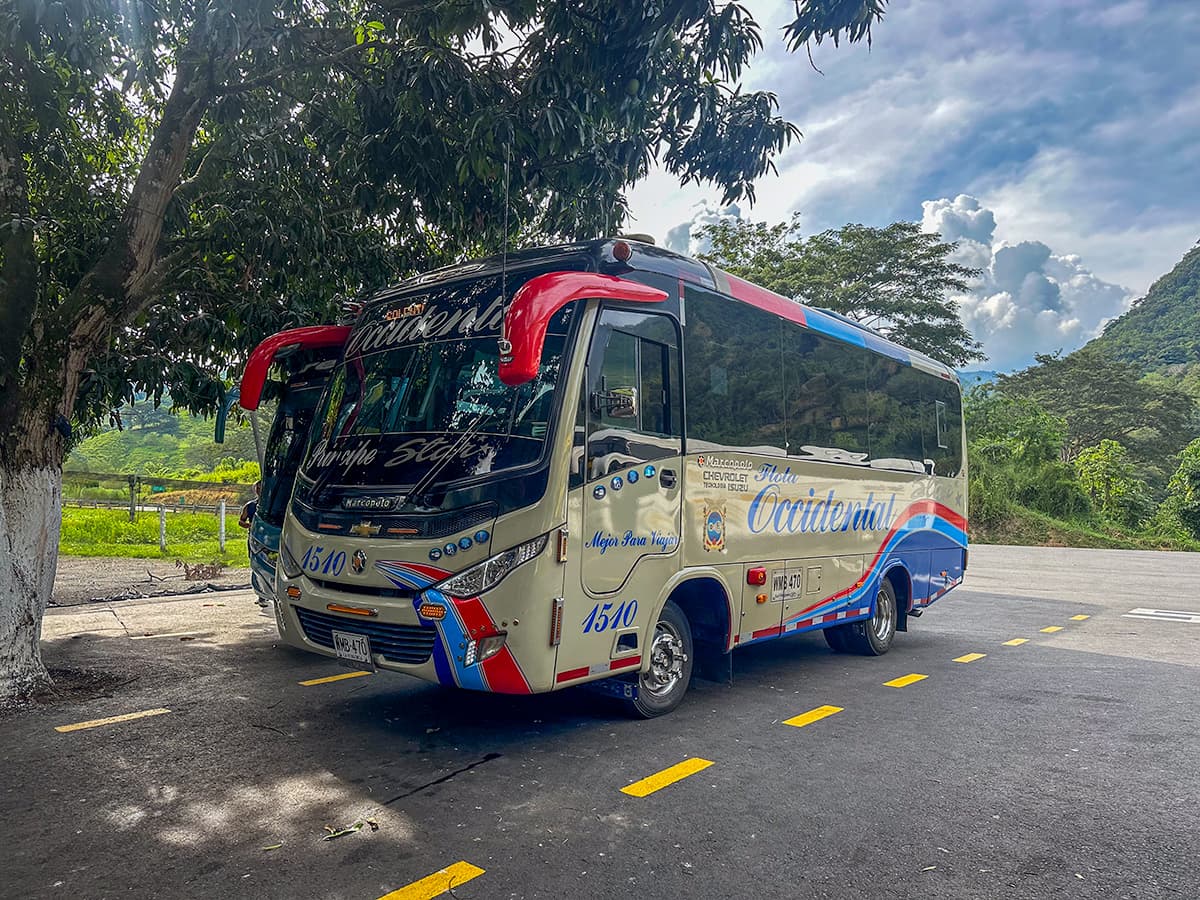
Here’s some bus options to consider:
Just be aware that, because of its location in the mountains, the bus ride to Salento can be on the longer side (around 4 hours away from Cali or seven hours away from Medellin and Bogota) and along winding roads.
We had heard horror stories about how nauseating the bus can be and were a bit nervous about our ride from Medellin to Salento—but our experience was actually relatively painless. If you are particularly prone to motion sickness, though, you might want to take some medication beforehand!
Getting to Salento by air
If you’re coming from a city that’s farther away or aren’t keen to sit on a bus for multiple hours, you might want to consider flying into the nearby city of Pereira, which has an international airport.
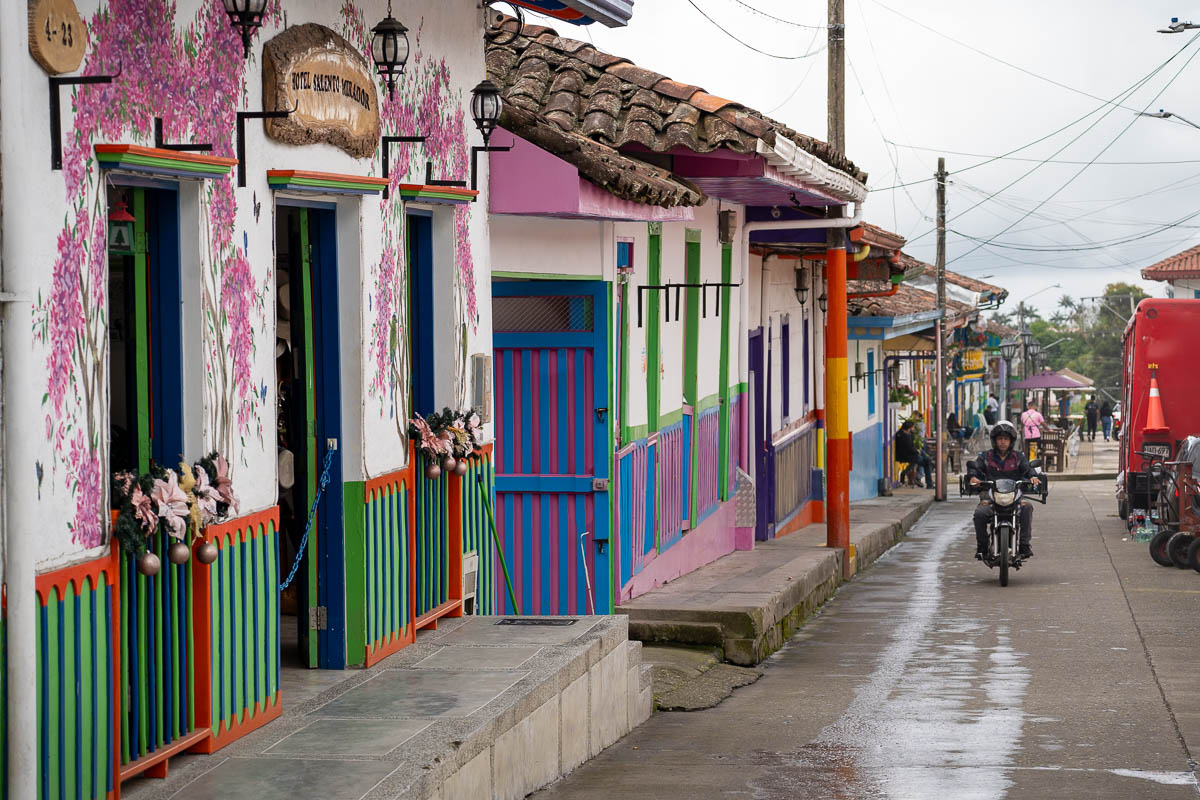
From here, you can hire a shuttle to pick you up from the airport and drop you off at your accomodations in Salento. Alternatively, you can grab a taxi or Uber to the bus station and then hop on an hour-long bus to Salento.
Things to do in Salento, Colombia
Now that we know how to get there, let’s get into the fun stuff—what to actually do in Salento!
1. Hike the Cocora Valley
The main reason most people come to Salento is to explore the Cocora Valley, which is part of the larger Parque Nacional Natural de Los Nevados.
The Cocora Valley has a pretty cool claim to fame—it’s home to one of the largest groves of wax palm trees, which is actually the tallest species of palm tree on the planet! This endangered tree, which can grow up to 200 feet tall and is only found in Colombia and Northern Peru, looks like something straight out of Dr. Seuss, with an impossibly skinny trunk and a big ol’ floof at the top.
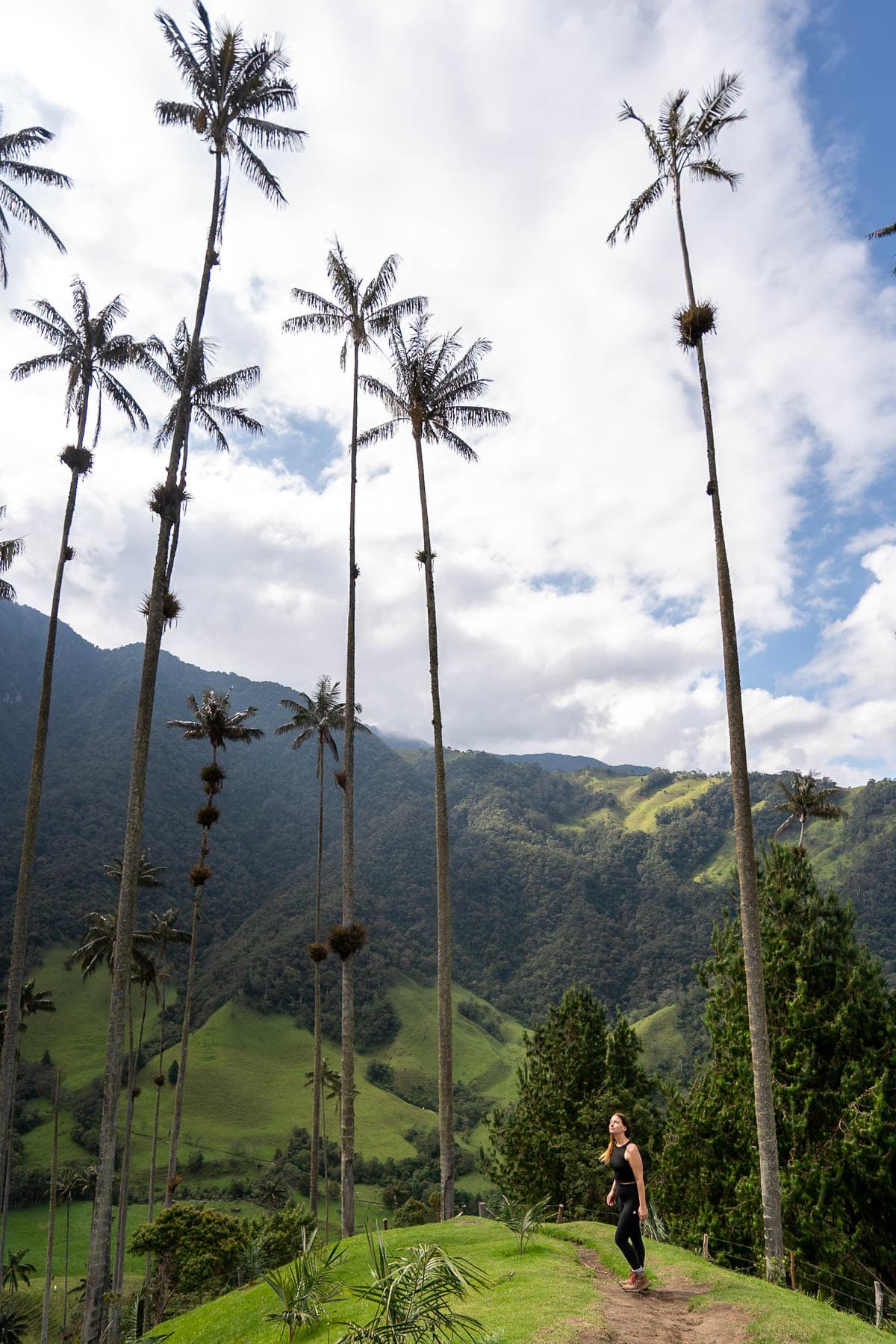
The best way to experience the wax palms is to hit some of the hiking
- Cocora Valley hike (out-and-back): There’s a fairly easy 4 km (2.5 miles) hike that loops through the bosque de palmas (or palm tree forest), with a variety of different viewpoints of the hundreds of wax palms spread throughout the valley.
- Cocora Valley hike (full loop): The most popular trail is a 12 km (7.5 mile) loop hike through the Cocora Valley, which takes you past the bosque de palmas, waterfalls, and a private hummingbird reserve.
- Cerro Morrogacho: This is a steep and challenging 13 km (8 mile) hike, which climbs up to a farm in a cloud forest, with the wax palm trees off in the distance. This is the hike we chose to do on our first day in the Valley and, while it was absolutely beautiful, you don’t get very close to the wax palms. So I’d really only recommend this option if you have enough time for multiple hikes in the park or you’re looking for a more challenging trail.
Regardless of which route you choose, you’ll get stunning views of the surrounding green mountains, with cows and horses dotting the hillsides and plenty of moody clouds.
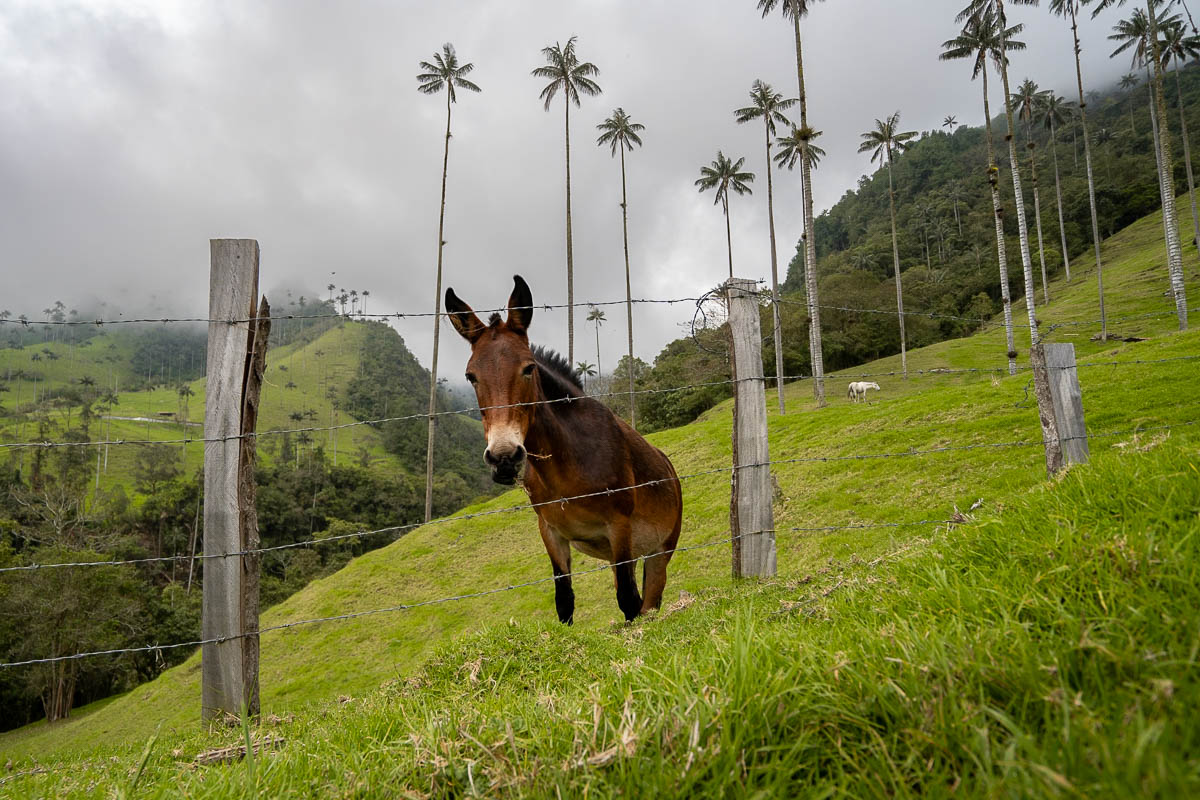
Just make sure to bring plenty of pesos! All of the hikes have entrance fees, ranging from COP 20,000 ($5 USD) for the shorter hike to COP 46,000 ($11 USD) per person, if you plan on hiking the full loop trail.
Insider tip: We had originally planned on hiking the full loop trail, but were told by the attendant when we were purchasing our tickets that a portion of this trail illegally passed on private property and that the police were occasionally called on tourists. Hundreds of people hike this trail every day and I haven’t otherwise heard of this being an issue—but something to be aware of if you’re risk averse, like us!
Getting from Salento to the Cocora Valley
To reach the Cocora Valley, head to the Plaza de Bolivar (or the main square in town) and buy tickets for a ride on a Wilie.
Willies are essentially old Jeeps that have been retrofitted to have two benches in the So, depending on how many people squeeze in (and how many folks cling on to its bumper!), they can fit up to 15 people. Roundtrip tickets cost COP 10,000 ($2.40 USD) and can only be purchased in cash.
The first Willy of the day departs from Salento at 6:30 AM, with the last Willy of the day returning from the Cocora Valley around 6:30 PM.
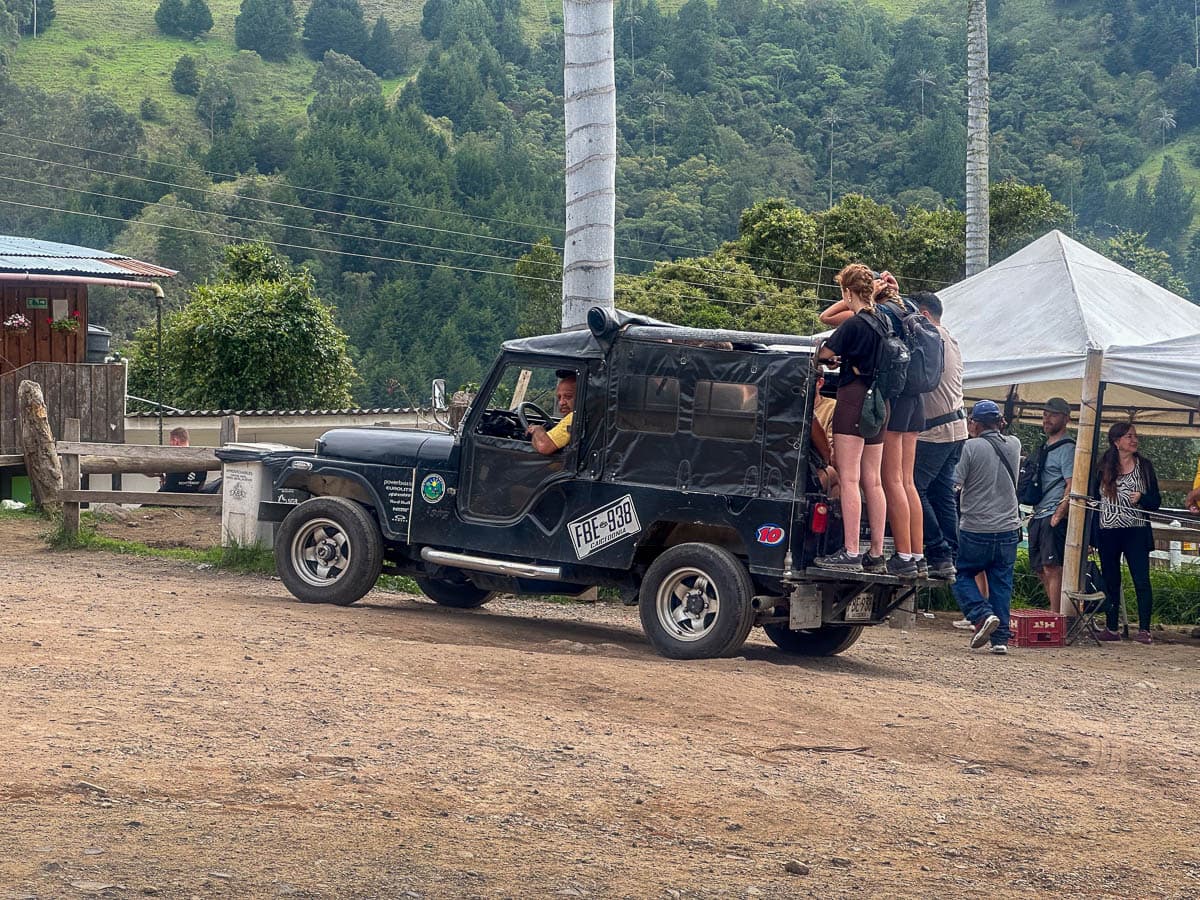
Alternatively, you can join a tour, like this group tour or this private option.
In full transparency, it’s easy enough to get to and navigate the Cocora Valley by yourself so you definitely don’t need a tour. However, if you want to learn more about the ecology, history, and culture of the region—or just don’t want to fart around with figuring out the whole Willie situation and what trail is right for you—tours can be an excellent option.
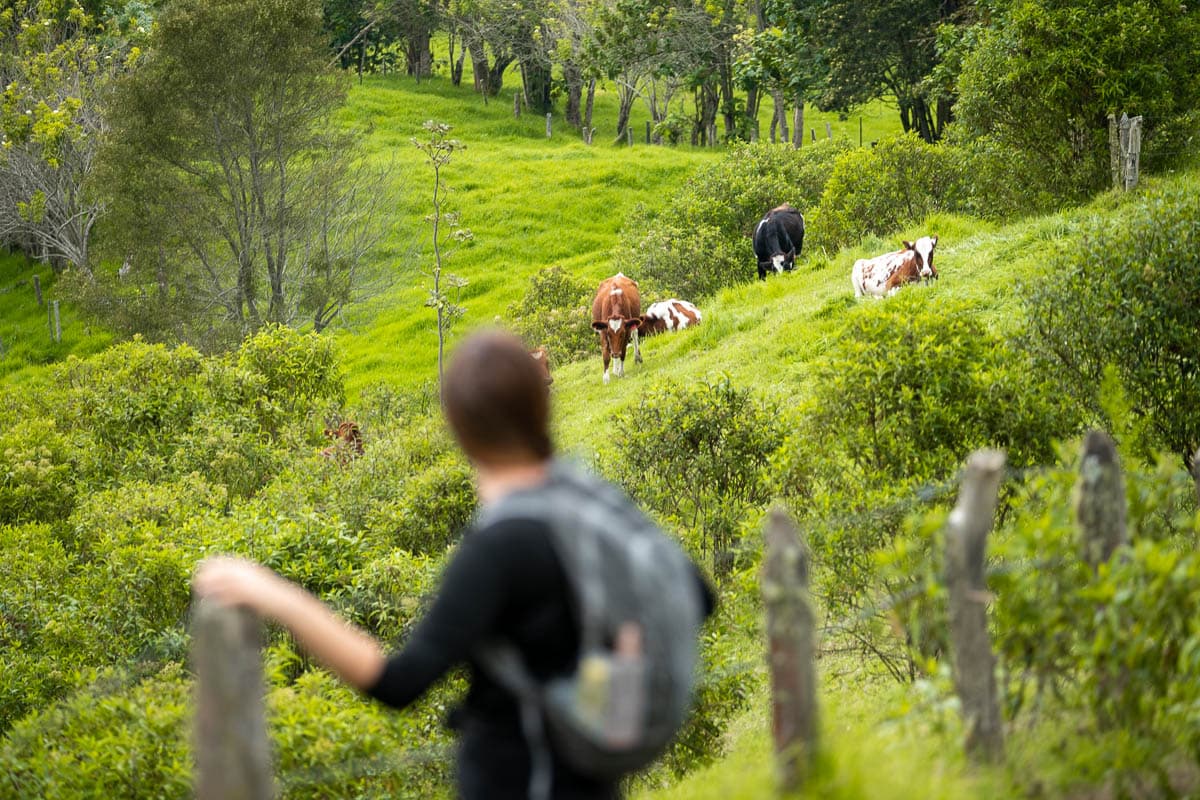
2. Play tejo
One of the most fun things to do in Salento is to play tejo, a traditional Colombian game that’s kind of like if shotput and cornhole had an exploding baby.
Essentially, there’s a clayboard with a metal ring pressed into it, which is lined with gunpowder-stuffed paper footballs. The objective of tejo is to throw a rock in the center of the metal ring—and, ideally, hit one of the paper footballs hard enough so that there’s actually a small explosion.
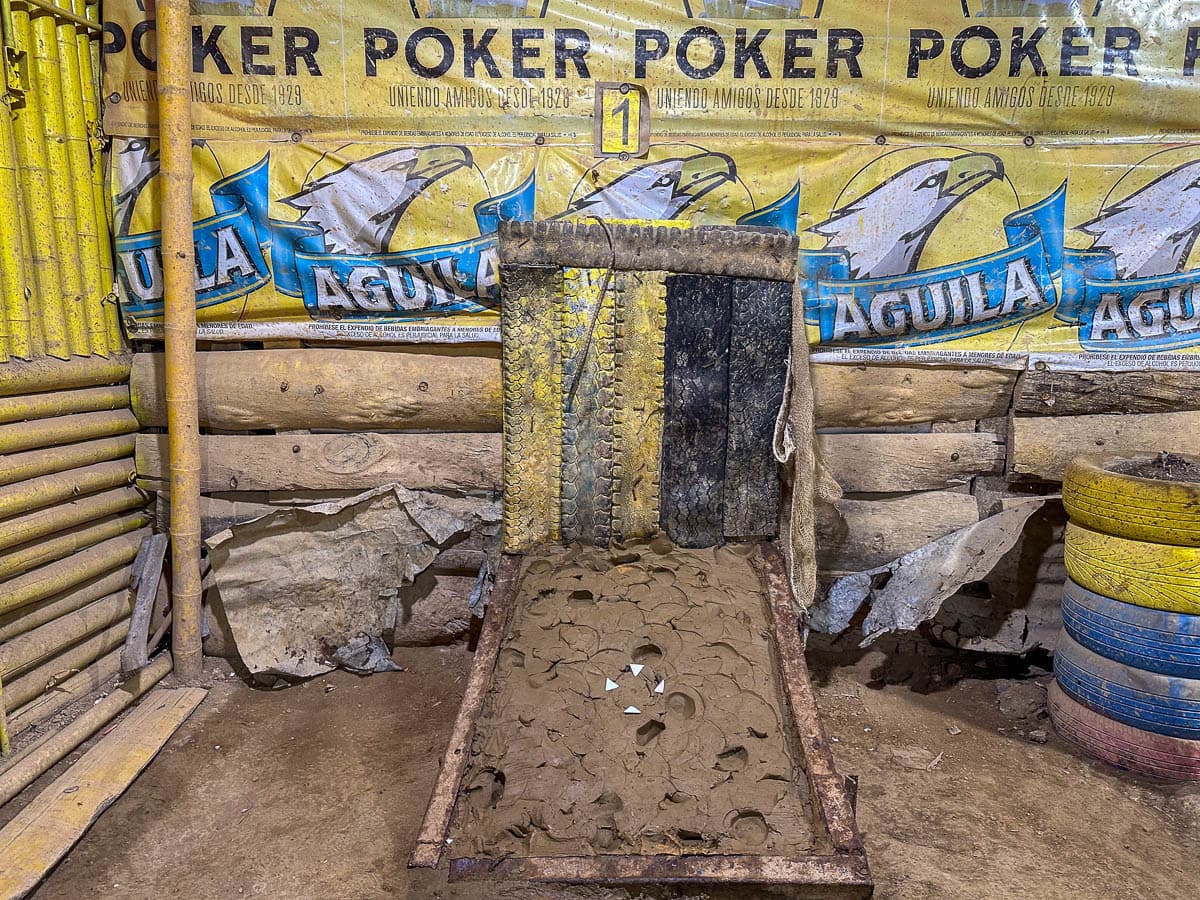
There used to be tejo halls all over Colombia, but they’re sadly dwindling down these days. Luckily, though, Salento is home to Cancha De Tejo Los Amigos, a tejo hall that’s perfect for beginners to give the game a try.
We spent one of our evenings in Salento, drinking cheap cervezas and perfecting our tejo game (it’s surprisingly hard!). We had SO much fun—I only wish we had gotten to play it some more during our time in Colombia!
3. Visit a coffee farm
Colombia is quite famous for its coffee—in fact, it’s the world’s third largest producer of it! And Salento just so happens to be located in the heart of the country’s coffee growing region.
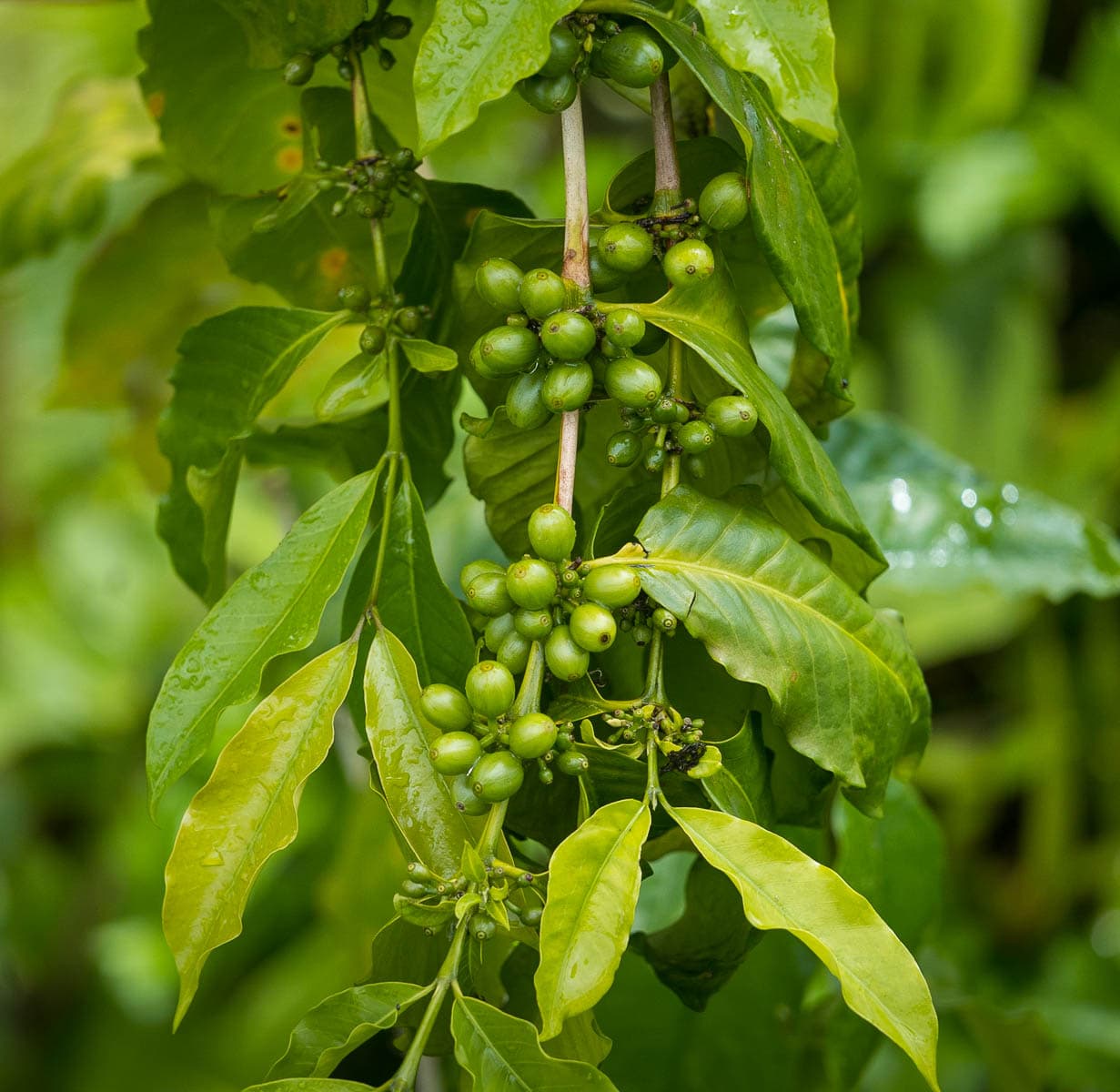
Accordingly, there’s plenty of farms where you can learn about what it takes to turn coffee from a simple seed into the warm cup of goodness we all enjoy every morning. Here’s some of our favorites:
- Finca El Ocasa: This is the most popular coffee farm in Salento—and for good reason. This family-owned and operated farm offers an extremely interactive tour, from planting your own coffee seeds and picking your own berries to brewing your own cup. Plus, if you’re not that interested in a tour itself, it’s one of the only fincas in Salento to have an onsite coffee bar—so you can try some of its beans without even going on the tour!
- Finca Don Elias: Don Elias is a special kind of place—in fact, it’s likely that you’ll be shown around the finca by Don Elias himself. One of my favorite things about this farm is that it uses a unique technique called permaculture, which essentially means that they use other kinds of native plants and animals to keep the land primed to grow coffee. It’s super interesting to learn about, especially from the sweet Elias family members that work here.
- Finca Buenos Aires: This tour takes my favorite aspects of Finca El Ocasa and kicks them up a notch. You’ll get to don an outfit of a traditional coffee farmer—complete with a poncho, paisa hat, and wicker coffee basket, which you’re welcome to fill with coffee berries throughout your tour. At the end of exploring the finca, you’ll get to enjoy a tasting at its farmhouse and, if you haven’t had your fill, can even try more options at their onsite coffee bar.
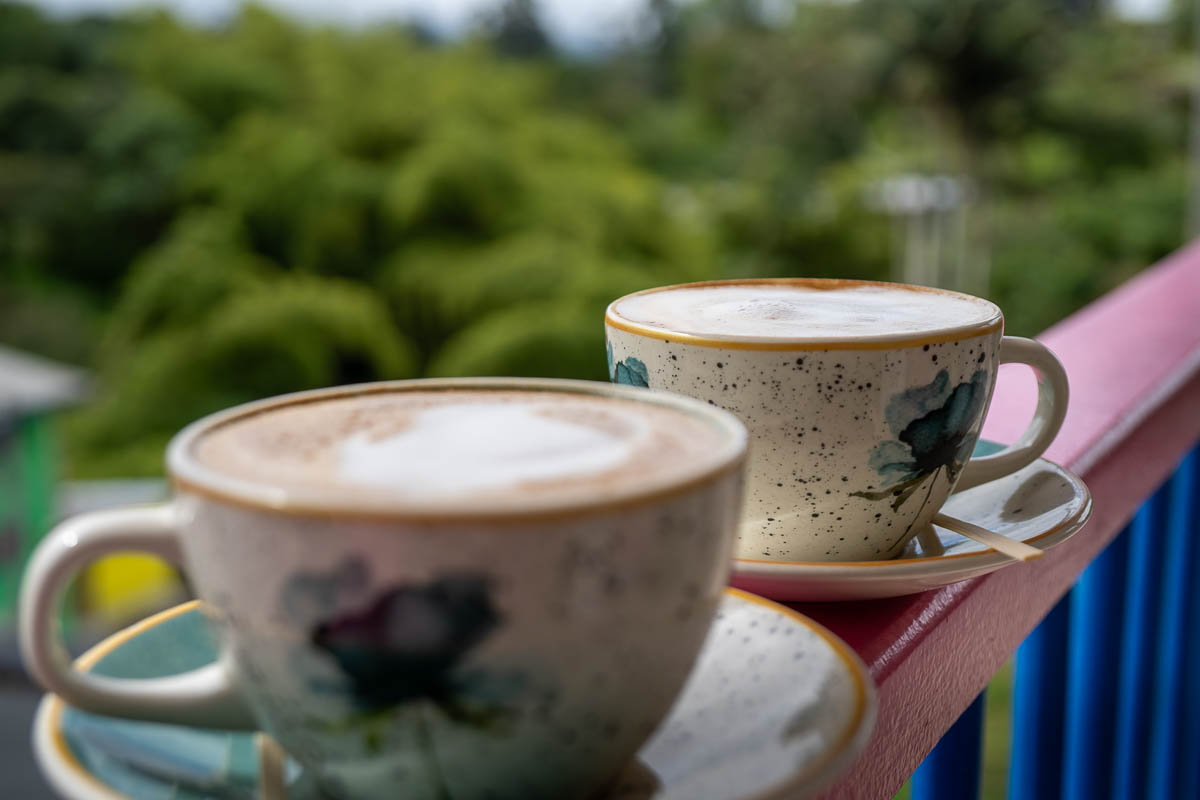
Like the Cocora Valley, it’s quite easy to get to the various fincas by taking a Willie from the town square. Just make sure to let the attendant know which finca you’re going to and they’ll hook you up with a Willie going in the right direction.
4. Explore Salento
Colombia is full of small unique towns, like Minca and Guatapé, but Salento somehow feels just a bit more magical. So be sure to spend a few hours moseying around its streets to browse the shops and cafes that line its colorful streets.
For example, Calle Real is a pedestrian-only street that’s lined with white buildings with colorful trim. If you’re looking to take some cute photos (who isn’t!), head to this street bright and early, so that you can photograph the shops’ colorful doors while the businesses are still closed. But be sure to stick around until the businesses open so that you can grab a cup of coffee from one of its coffee shops.
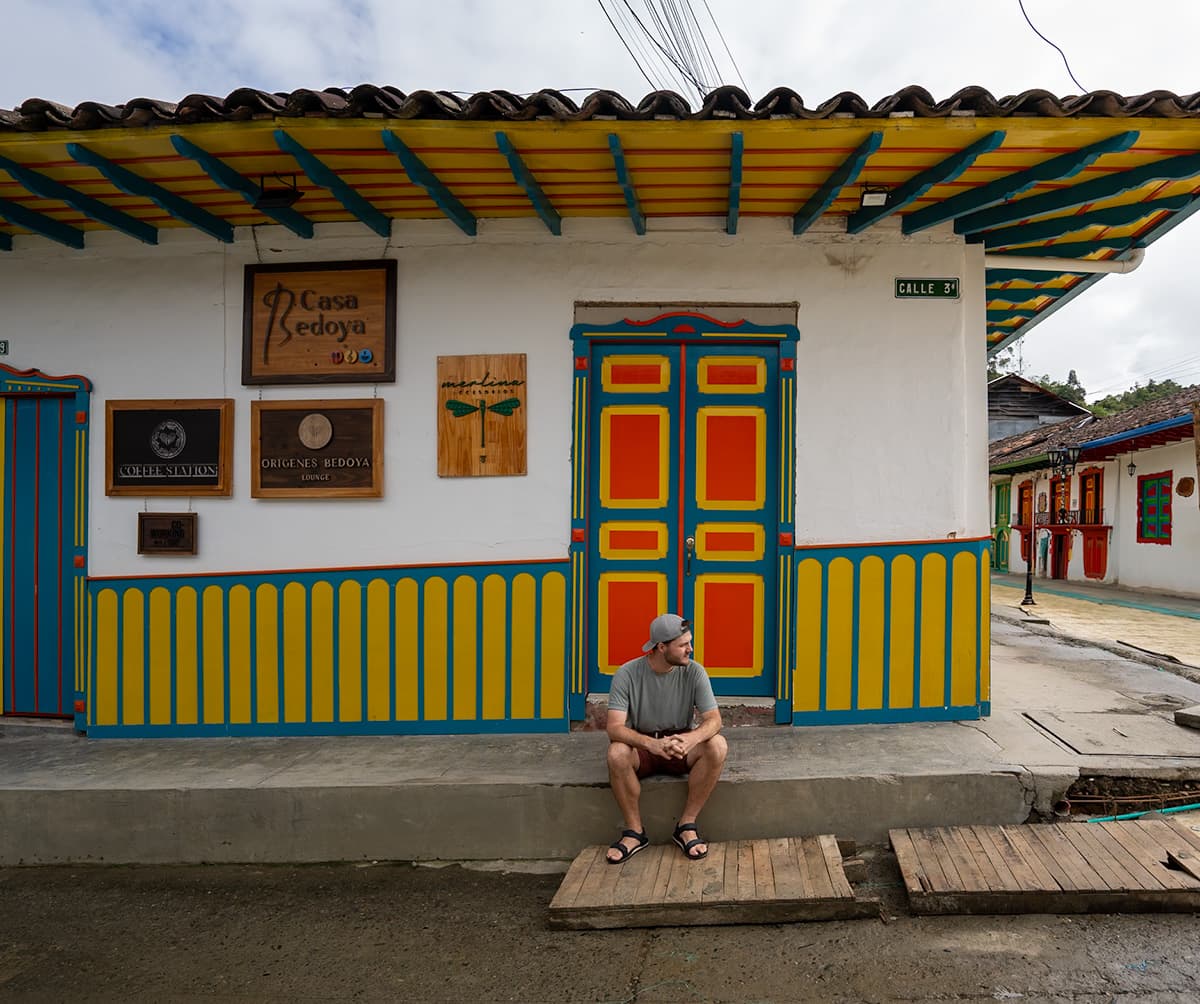
The town’s main square, Plaza de Bolivar, is also another fun place to explore. For example, pop into the cathedral, Parroquia Nuestra Señora del Carmen, to admire its grand architecture and beautiful stained glass windows.
This is also where you’ll also find one of my favorite coffee shops in Salento—Café Que Aproveche! The coffee shop is kind of hidden, located upstairs of a few gift shops, but the coffee is DELICIOUS and it has one of the best views in town.
5. Climb up to the Mirador de Salento
While you’re out exploring Salento, be sure to head all the way down Calle Real and climb up the steep staircase at its eastern end. At the top, you’ll find two viewpoints, with one overlooking the city and the other overlooking the surrounding Andes Mountains.
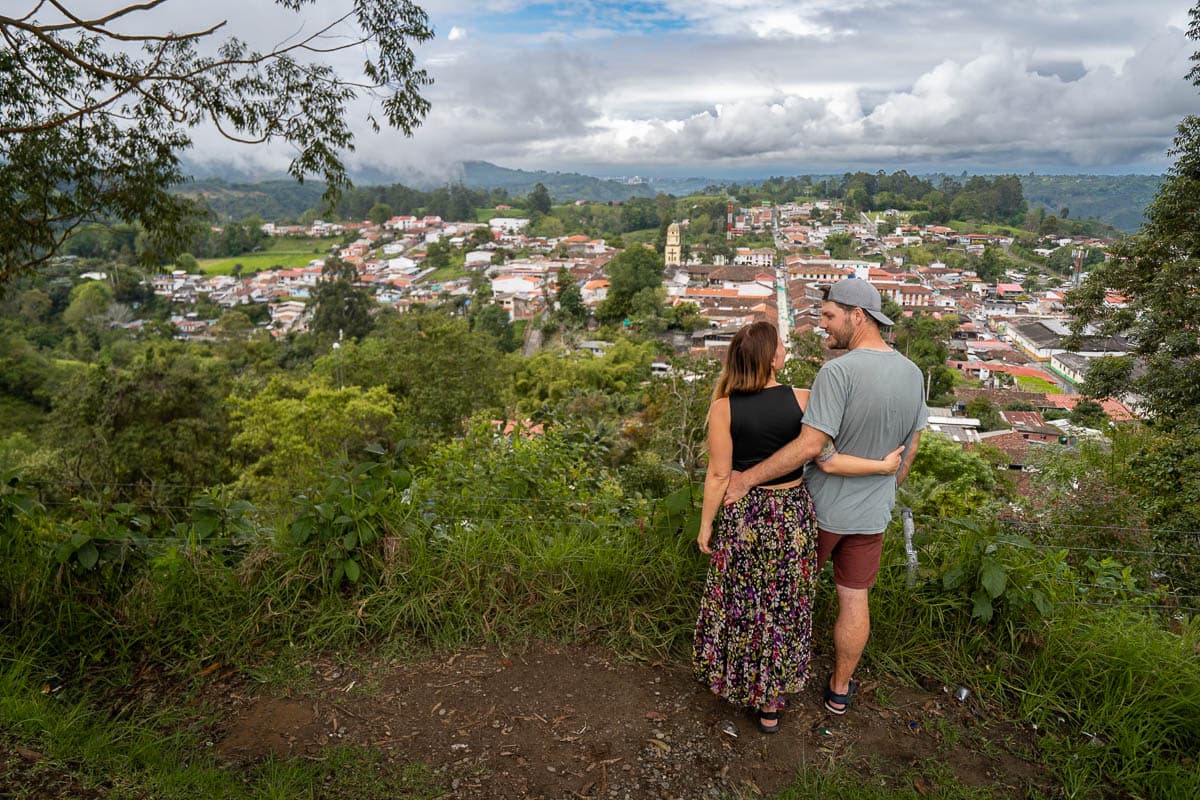
For the most spectacular views, be sure to come here for sunset—there’s a handful of restaurants and food vendors that are usually open around this time, so grab a michelada and watch the sun cast its glowy, golden light over the town.
6. Bird watching
Colombia is known for being one of the best places in the world for bird-watching, thanks to its rich biodiversity. In fact, Salento is home to an estimated 660 species of feathered friends!
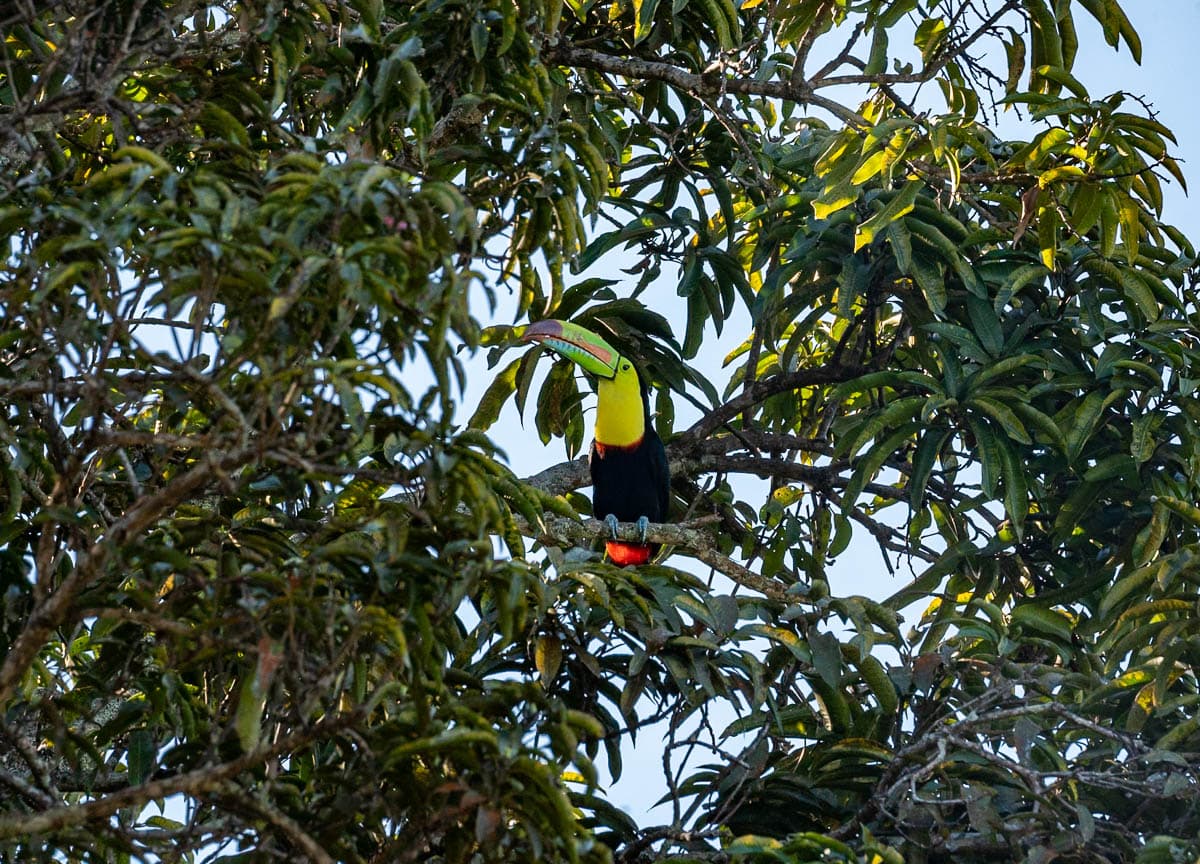
You can bird watch on your own—for example, the Cocora Valley or even the Mirador de Salento are great places to try to spot hummingbirds or even more exotic birds, like toucans or macaws.
Alternatively, if you want a better chance of spotting some of the area’s more elusive birds, you can join a bird watching tour, like this option or this option, where a knowledgeable guide will help you find these beautiful creatures in Colombia’s dense greenery.
7. Take a daytrip to Filandia
Filandia is a charming neighboring town that kind of feels like Salento before it became so touristy—colorful buildings, the lush green Andes mountains, and virtually no crowds.
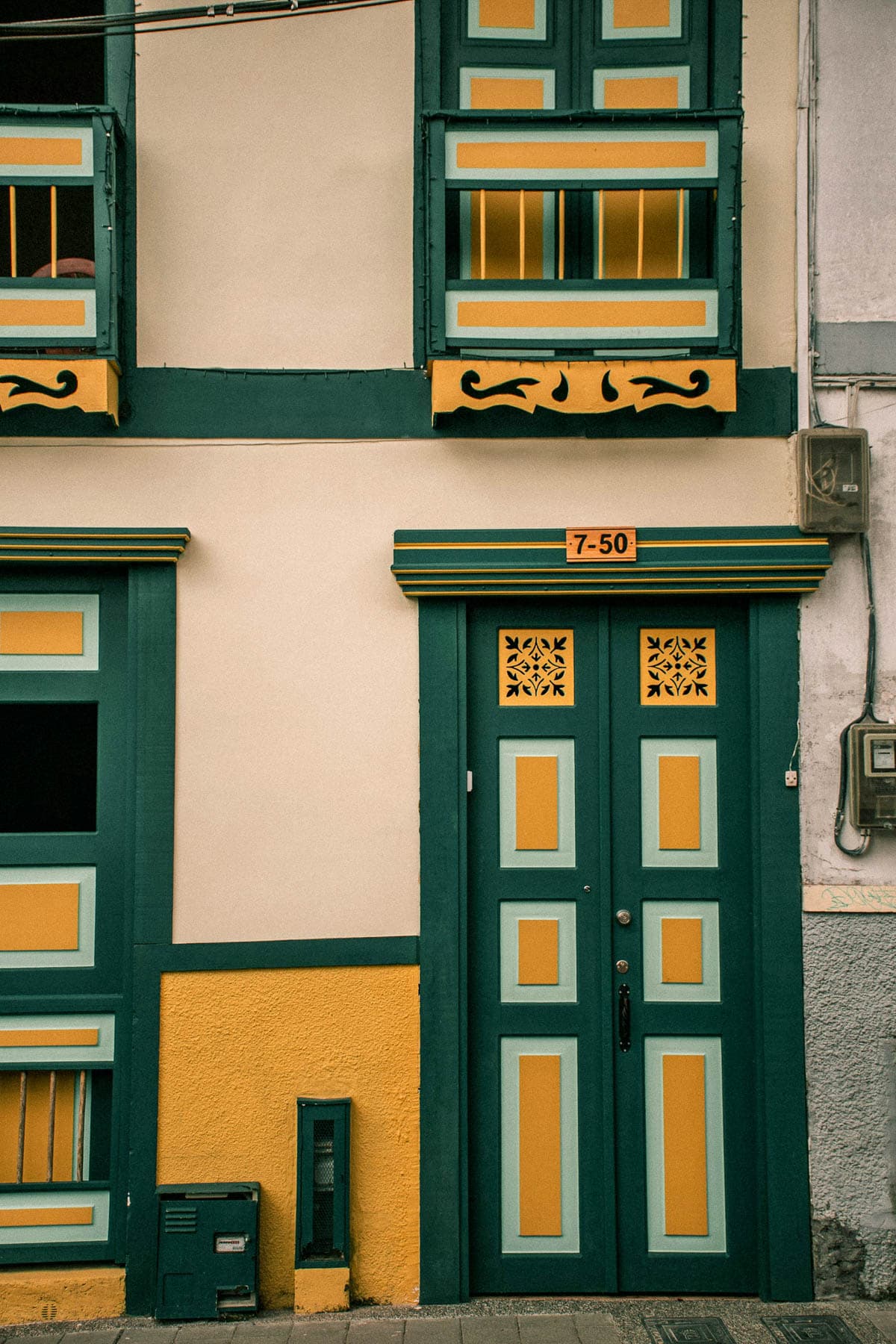
While some of the activities in Finlandia are similar to those in Salento, like hitting up its coffee farms, there’s definitely unique things to do here as well. For example, rent bikes from one of the hostels in town, like Bidea Hostel or Colina de la Lluvia, and cycle past dozens of coffee fincas on your way to the even teenier town of Quimbaya. Or head to the Barbas-Bremen Reserve, an ecological park that’s known for being an excellent spot for seeing howler monkeys.
I’d definitely suggest visiting Filandia before it becomes more well-trodden on the tourist track!
8. Hike to the Cascada Santa Rita
If you happen to be visiting during a warmer period, one of the best things to do in Salento is to head to the Santa Rita Waterfalls, which offers several small waterfalls and refreshing swimming holes that you can enjoy.
The waterfall is located in Finca Santa Rita, which you can reach either by walking about an hour from downtown Salento or asking one of the Willies heading to the Cocora Valley to drop you off.
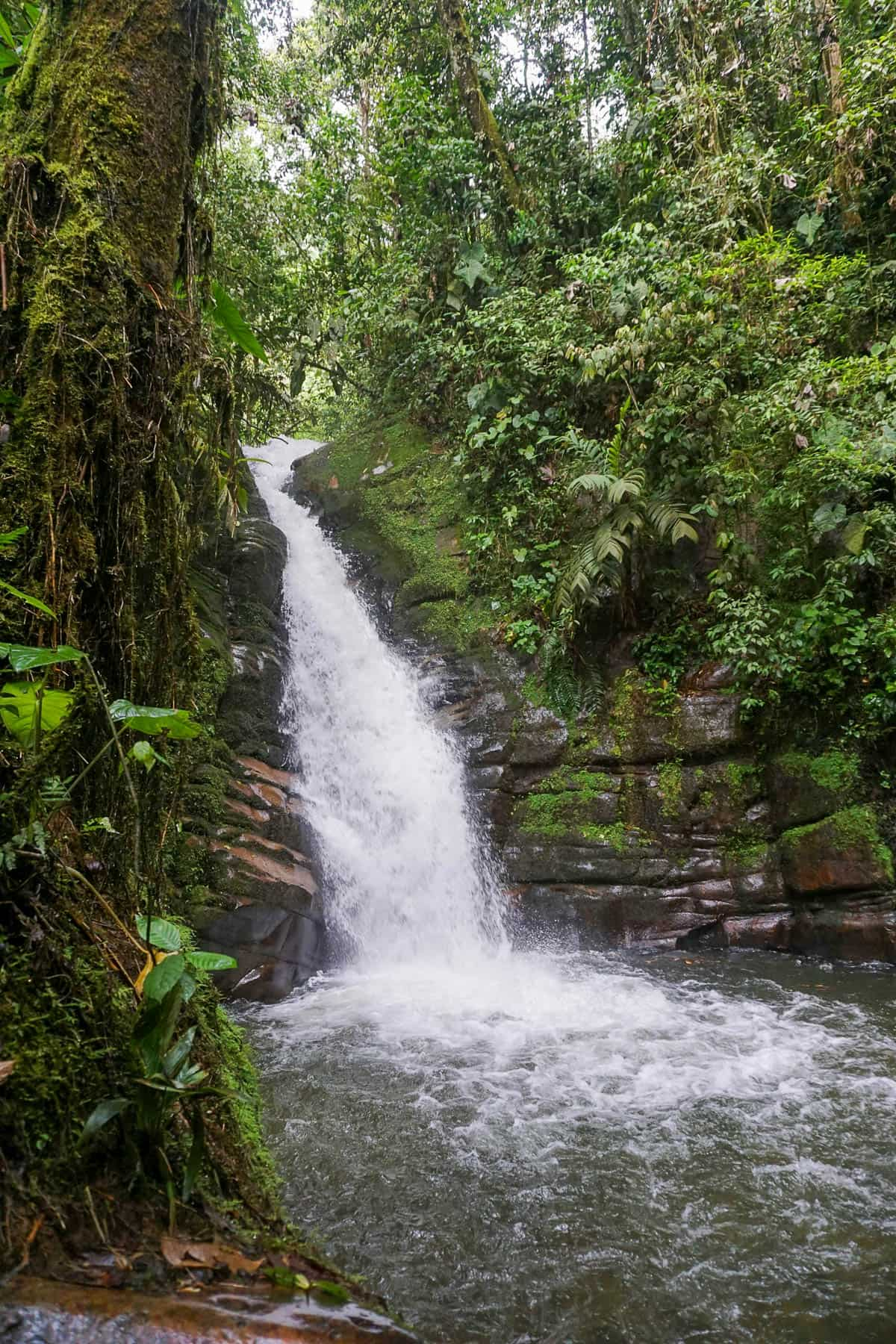
Since it’s private property, you’ll need to pay a small entrance fee (COP 7,000) to access its hiking trails. It’s a pretty flat 1.5 km (one mile) hike to the main waterfall, although there’s additional trails to explore the rest of the property’s cascades and swimming holes.
As an added bonus, this is one of the best spots in Salento to see birds!
9. Take a day trip to the Santa Rosa Hot Springs
If you’re a hot spring lover like us, consider taking a day trip to the beautiful Santa Rosa Hot Springs, located about two hours away from Salento. This resort is absolutely beautiful and offers a variety of pools that are fed by natural hot springs, as well as a cold plunge pool fed by an absolutely stunning multi-tiered waterfall.
Getting here by yourself would be kind of complicated, so I’d suggest going on a tour, like this customizable tour.
When to visit Salento, Colombia
With all of its lush green hills and low-hanging clouds, it probably comes as no surprise, but Salento can be a bit on the rainy side.
The driest months are typically December through March. For what it’s worth, we visited in December and it still rained four out of the seven days we were in Salento. And a local we met said that we were actually quite lucky—that it had rained every day for weeks straight before we arrived!
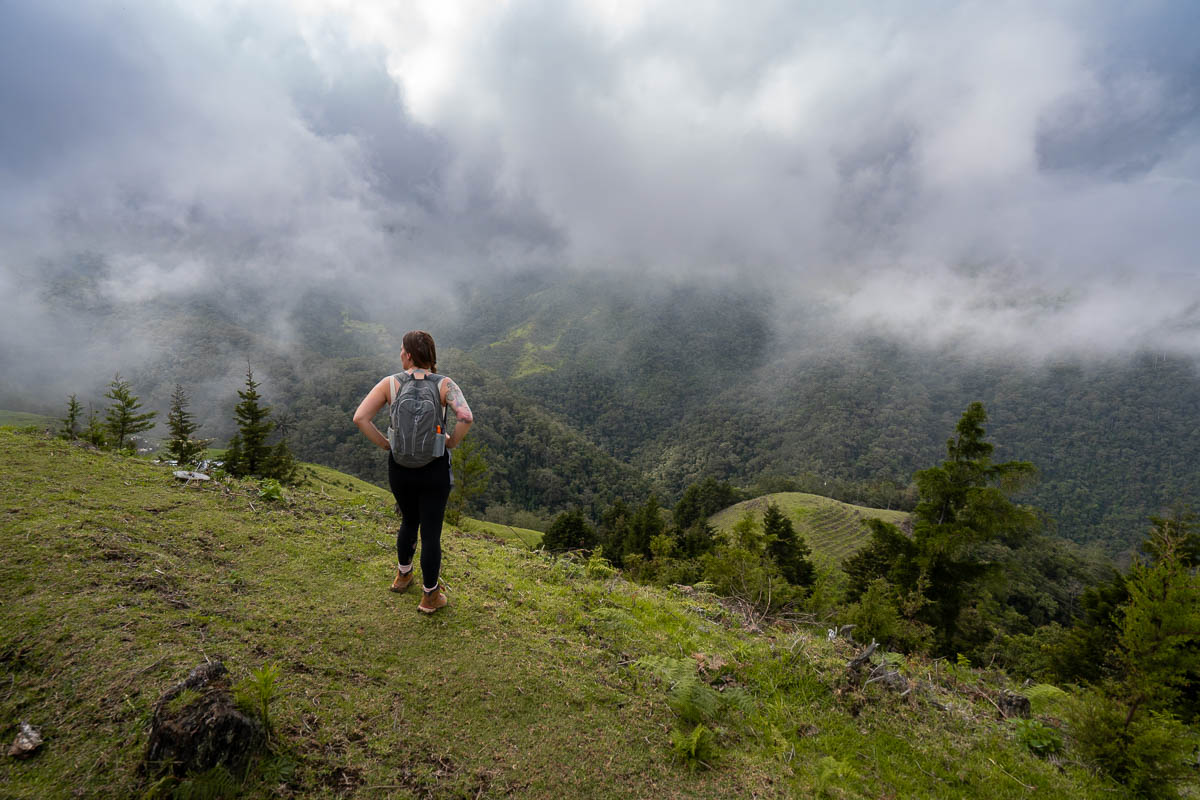
So, whether you’re visiting during “dry” or rainy season, I’d highly recommend packing along a rainjacket and waterproof hiking boots (here‘s the pair I use and love and here‘s Justin’s)—the trails around Salento are famously muddy.
Where to stay in Salento, Colombia
Salento has been on the tourist track for a while now, so thankfully, there are plenty of great hotels to choose from! Here’s some of our favorites:
- Beta Hotel: This hotel has an excellent location in Salento and leans into the town’s historic and cheery architecture. The rooms are spacious and comfortable and the complimentary breakfast is surprisingly delicious!
- Hotel Salento Real: This property is just a short walk from the town’s square, but still manages to feel pretty secluded, with its sweet small garden and blooming fruit trees. The rooms are on the updated side, most of which have adorable little balconies, and you’ll get a nice free breakfast included in your stay.
- Casa Borbon: This hotel has everything you need, with clean and comfy rooms, a communal fridge and microwave that guests are welcome to use, and absolutely stunning views of the surrounding Andes Mountains.
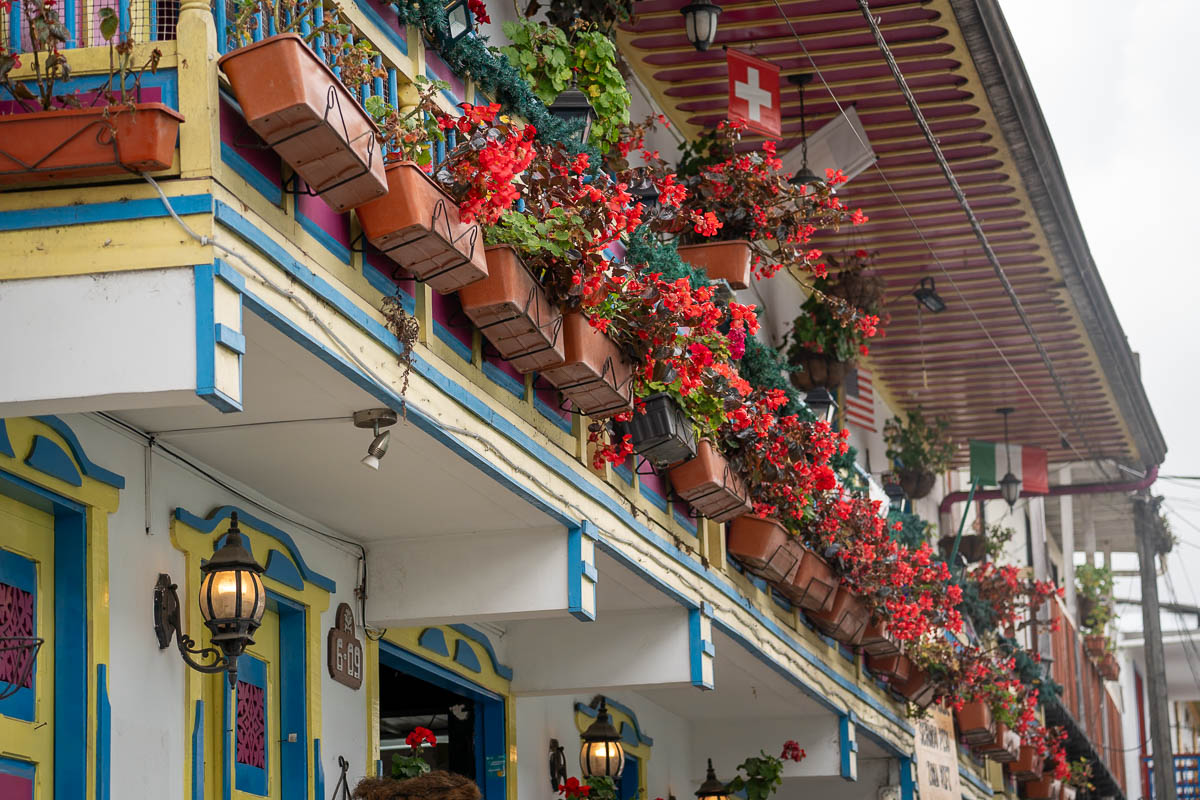
Salento was one of our favorite places in Colombia—I hope you enjoy it as much as we did! Do you have any questions about visiting Salento? Let us know in the comments below!

